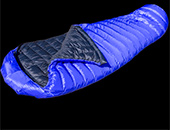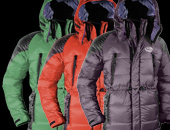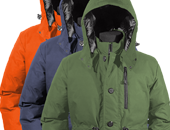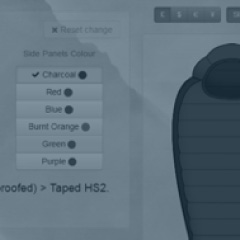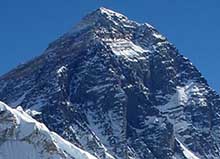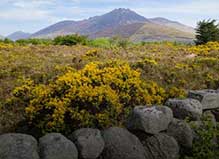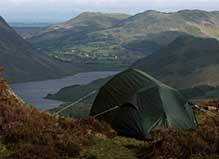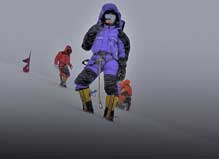The Lowdown
Extraordinary stories and technical knowhowBivouacs, a personal view
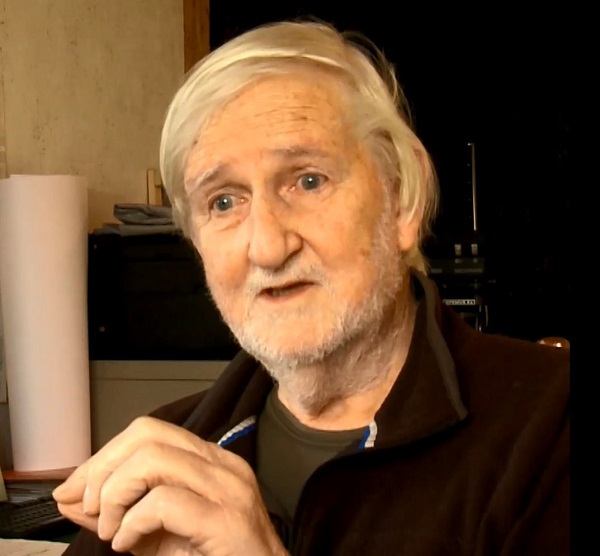
The good old days
These are random recollections of bivvies which made a lasting impression on me. No advice is intended, except maybe what not to do.
Minimalism
My first memories of bivvying belong to the start of the 1950s, when I spent school holidays running all over the hills and dales from Yorkshire to Northumberland by myself. It was a real pleasure to travel light, which meant a couple of sandwiches and a bar of chocolate in my pocket, nothing else: no rucksack, no extra gear. When the weather was good, I was often temped into staying out. Even in mid summer the results were predictable, familiar I guess to anyone who has done the same.
Find as sheltered a spot as possible, lie down, look at the night sky and fall asleep. Wake up cold a bit later, then spend unbelievably long hours shivering and dozing until the first faint light appeared in the sky. I got up each time convinced what a bad idea it was, but I loved the freedom and I was young and daft enough to go through the chilly experience again and again. The worst one was when I woke up stretched out on top of a dry stone wall: warmer than the ground, but not something I ever wanted to repeat.
Warmth and ambience
Starting to climb brought some sense. The warmth of a sleeping bag meant a night’s sleep, or should have done. A few nights in the cave on Stanage were enough to teach me that ambience was just as important. The racket of drunken climbers trying to climb back in after the Hathersage pub had closed warned me it was worth staying awake to avoid being stepped on. After that I preferred Lawrencefield or Stanage North End for a quiet night. The only time I tried to repeat my previous habit of sleeping without gear I couldn’t stand it, so I got up and walked home twenty miles over the hills by moonlight instead.
A couple of other UK bivvies had both warmth and ambience. One was among the huge boulders on the summit of Glyder Fach. In the early 1950’s sleeping and cooking gear were incredibly heavy to hump around by modern standards, but we were rewarded with a superb slow dawn that unfolded in utter silence before we stashed the gear and trotted off to do the Snowdon horseshoe.
The other was also in Wales, but quite different. It taught me the meaning of schadenfreude. Given a few days' army leave, I hitched down to Wales with a sleeping bag, a little stove and no plans. The weather was mixed, so I looked around the slopes below Llyn Bochlwyd and was lucky enough to chance on a big boulder with a slot underneath just big enough for me and my gear. Next day a party pitched their tents on the inviting turf by the stream below just as the rain began. On the second night the stream became a raging torrent which swept right through their tents and sent them away bedraggled at first light, adding to my smug pleasure safe in my little private lair.
Alpine bivvies
My limited experience of alpine bivvies belongs to the days when lightweight down gear was well developed on the continent, but was extremely expensive in the UK. State of the art for most Brits was an extension flap on the rucksack to put your legs in and an extra sweater, guaranteeing a long cold night much like my minimalist days. Huts or tents were a better proposition. But not all bivouacs are planned, and cold and ambience are not the only problems, as I found out.
Chamonix
In 1959 I was camping with Colin by a tiny pool we had found high under the Blaitiere above Chamonix. It made a great base for climbs on the Aiguilles, but a bivvy was inevitable when we set off on the long walk round the end of the Aiguilles, then up the full length of the Mer de Glace and the Geant Glacier to our climb, the Bonatti on the Grand Capucin.
We had a normal chilly bivouac on the first ledge above the bergschrund, while we decided about the next day. Bonatti had used well over a hundred pegs on the first ascent, so as well as the bivvy gear we had brought a lot of ironmongery with us. No chocks or nuts in those days, not even any lightweight krabs, just a deadweight of steel. Hauling that lot up the route would mean another bivvy for certain, while going light might get us up and down in the day. We had heard that the route had a lot of pegs in situ, so we set off with six pegs and fingers crossed.
Things started well. Then the pegs gradually thinned out the higher we got, until we reached the crux, the 40metre wall, which had been completely cleaned. That took me a very long time to lead and blew away any hope of getting down again the same day.
The unavoidable bivvy was on a nice big ledge with all the ambience we could wish for. A superb night sky with the lights of the Helbronner Ski Station twinkling at us across the glacier. It was cold, but that was insignificant compared to the real problem caused by our own inexperience. We had completely run out of water and after a long hot day in the sun raging thirst kept us awake all night. Next day we climbed the rest of the route (which had also been cleaned) to the summit and descended, as slow as old men, until we were revived by a huge bottle of sparkling water in the Ski Station.
Dolomites
Not many Dolomite routes need a bivvy in summer. This time it was a different element that changed the game. The weather.
We were camping beside the Lavaredo Hut (probably forbidden now), so the north faces of the Tre Cime were just round the corner. Four us strolled around and tossed for which pair would go first on the Comici on the Cima Grande. Al and I lost, so Pete and Bas went off first and gradually pulled away from us. We were enjoying the route so much that we paid no particular attention to the growing heaviness of the day until a crack of thunder warned us that the weather was changing. We had no view of the sky to the south, but the first little tendrils of cloud were already twisting around the summit above us.
Time to speed up. Pete and Bas disappeared into the mist and we found out next day that they had made it back to camp. Al and I finished the route and blundered around trying to find the way down in thick cloud as the thunder came closer and the hail and lightning started. So we settled down under an overhang to wait. And wait. The storm went on for hours and we had no head torches anyway, so it ended up as another unplanned bivouac. Even without gear it wasn’t really cold, but we didn’t realise till later that we had made a dangerous choice. Apparently lightning likes overhangs, just another little bit of useful info for the future.
Norway
Not the Alps, but the mountain walls are even bigger. I was in Romsdal with Colin in 1961, having a look-see at what we could do in this dreamscape of vertical rock. It was a light-hearted trip and it didn’t take long to dismiss the unclimbed Trolltind Wall, but Mongeura in the sun across the valley looked tempting. It was a big wall with no routes as far as we knew, which made it irresistible. It turned out to be a strange and very relaxed experience, both the climbing and the bivvy.
This was a fun outing, so we took no hardware and no bivvy gear. The wandering route we found was unique in our experience: every pitch or two seemed to land us on another comfortable ledge with bushes and flowers and bees buzzing. Higher up the climbing became more and more continuous until a nasty little pitch of rotten rock turned us back, but there was none of the anxiety we might have felt in the Alps. We had no bivvy gear, but it was easy to rope down to a nice ledge to sit out the very short northern night.
De Luxe Bivvies
This little section has nothing to do with cold and everything to do with ambience. Nothing technical about it, just the pleasure that can sometimes be found by hobos who can’t afford a bed for the night or simply prefer to spend their nights outside.
One year four of us were trying to do the Cassin on the Badile, but each time we walked up to the Sciora hut there was another storm that left the face completely white from top to bottom. To give it time to melt we drove down to Lake Como and chanced on some little caves tucked away on the shore line. Besides the lovely outlook we had a bonus in the endless oranges which came floating past every day: they must have been discards from somewhere, but they tasted perfectly fine to us. In the end only Bas and I went up the third time to snatch the route before the afternoon storm, while the other two lotus-eaters couldn’t bear to tear themselves away from the idyllic Como bivvy to risk another disappointment.
Another special place was the Calanques, where a bivvy was sheer pleasure as long as one kept out of sight of the gendarmes who patrolled by helicopter because of the fire danger. At different times with different companions I spent several nights sleeping in the open at D’en Vau before hiding the sleeping gear under the thickets of large bushes by day. Fantastic skies at night and delightful white limestone rising from blue blue water in the morning sun. No luxury hotel could do it better.
Modern Times
From the early sixties other commitments cut out most of my climbing, but ignited my interest in the software involved. The interest has never waned, an expression I guess of the closest I can come now to some of the most vivid experiences of my active years.
Developing Bivvy gear
In 1960 when Pete and I were twiddling our thumbs waiting for customers in our Manchester shop, we pulled apart one or two of the best examples of lightweight continental down gear, one of them a pied d’elephant. The use of down bivvy gear was new to us, but the potential was obvious if we could make it. We could. A bit crude to start with, but in my slow solo apprenticeship over the next decade I learned to improve on the originals.
As I climbed less and less most of my bivvies were to try out new gear. The idea was to push the sleeping gear beyond its rating and see how it felt. On one early occasion I got all I could have wished on the modest hill of Holme Moss. Snow had blocked the road, so I trudged up with the test bag and a bivvy sac and bedded down hurriedly in a mounting storm on the summit. The bag worked a treat and I woke in the morning to find to my amazement that I was almost buried in a drift and there were foot long icicles standing out horizontally all along the wire fence a few yards away. A low hill, but I’m not sure I would have survived that night in the open without the gear. A long way from my free-wandering early days, but I had a lot to find out about what was possible with the right kit.
Bivvies with lightweight gear were no problem, but to try out warmer stuff it’s often been hard to find really cold conditions in this country just when you want them. So I had to ‘bivvy’ in cold chambers a few times when it was necessary to make sure of the low temperatures required for the test. The most recent occasion just a few years ago was perhaps the nearest to a real bivvy, where the temperature was kept down to -21°C by the air blown out of huge fans. An artificial situation and not a bundle of fun, but it helped us to confirm some of our ideas about PHD’s Sleep Systems.
State of the Day
It’s interesting how things change. In the alps huts and lifts kept improving to the point where they were the natural choice for access to the mountains and bivvies became rare, for emergencies only. There are signs now that the intrinsic values of a bivvy, the freedom, the flexibility and the experience, are being rediscovered. Add in the long trails that have been developed all over the world and it’s possible to see why there has been a revival of interest in the simplest possible way of sleeping out.
For me the personal process of refining bivvy gear began in the little shack where I was living and working nearly sixty years ago. Since then it’s been a long slow upward curve, until recent improvements in fabrics, down and design have made PHD’s current bivvy gear unbelievably light and efficient by comparison with the old days. Now the comfort and safety it offers will add minimal weight and bulk to any pack. Of course it’s an unending process of improvement and it will surely be lighter than ever in the future.
Other bivvy items, cookers, headtorches, etc, have also advanced. The possibilities have increased these days, excitingly so, and it’s up to the individual to decide. You can still be as close to a minimalist as you wish or opt for almost any level of safety and comfort you like.
I always found bivvies rewarding, the comfortable, the bearable, even the grim (in retrospect). With the new kit available they offer a wonderful alternative way of spending nights outdoors. You can have the magic without the misery. Except of course when things don’t go quite as you expect …..!
If you are into bivvying, you probably already know more about it than I do. If it’s new to you, I can’t recommend it enough. The experience, the freedom, and the mistakes. Whether you’re just roaming, travelling the world, sitting on a mountain ledge, or tied to a hanging belay, I wish you good nights under the open sky. I hope you get as much from them as I did, even from the ones that went wrong. I’ll let Gaston Rebuffat have the last word “Some mountaineers are proud of having done all their climbs without bivouac. How much they have missed!”
Peter Hutchinson 2017
“Some mountaineers are proud of having done all their climbs without bivouac. How much they have missed!”


